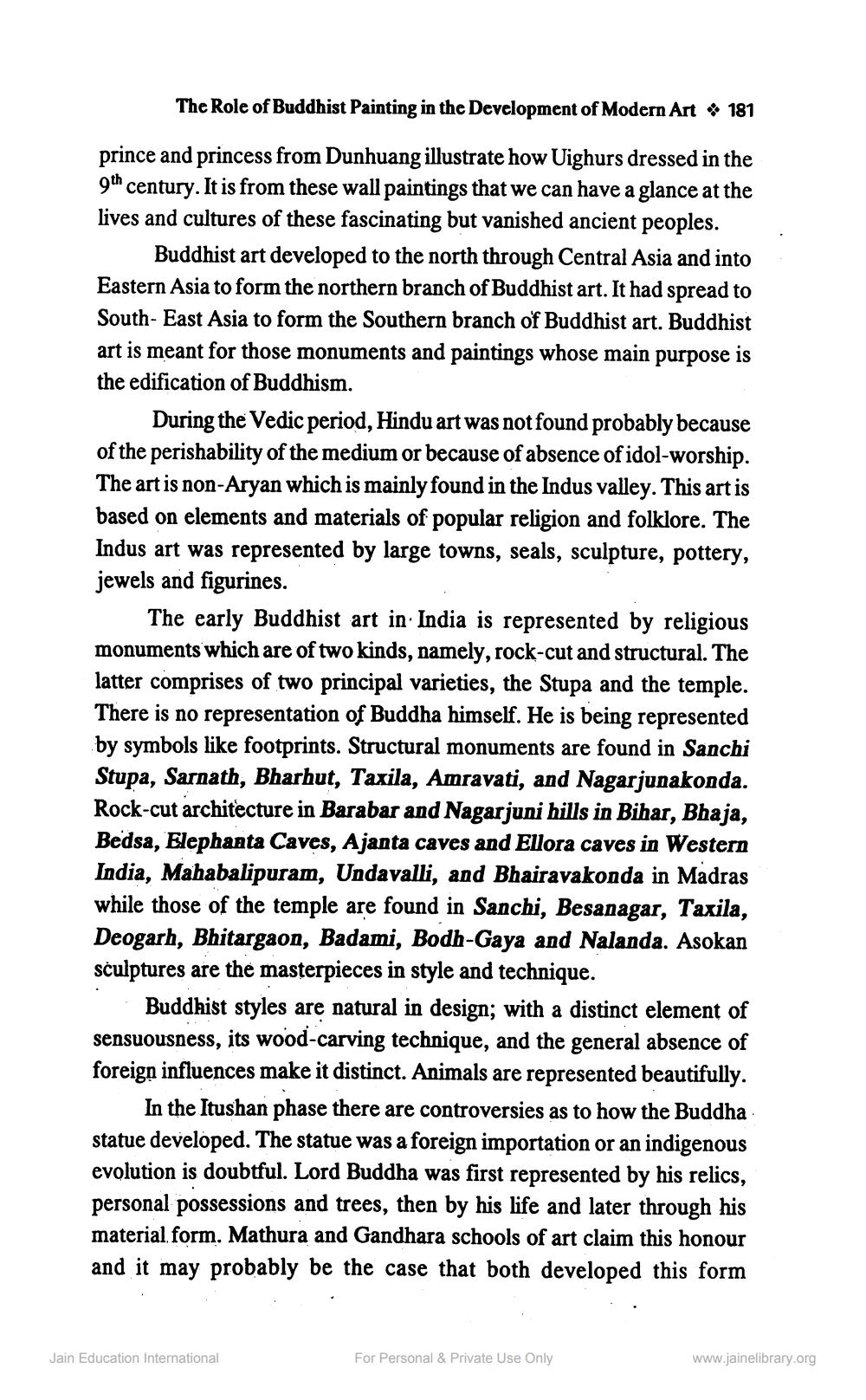________________
The Role of Buddhist Painting in the Development of Modern Art * 181
prince and princess from Dunhuang illustrate how Uighurs dressed in the 9th century. It is from these wall paintings that we can have a glance at the lives and cultures of these fascinating but vanished ancient peoples.
Buddhist art developed to the north through Central Asia and into Eastern Asia to form the northern branch of Buddhist art. It had spread to South-East Asia to form the Southern branch of Buddhist art. Buddhist art is meant for those monuments and paintings whose main purpose is the edification of Buddhism.
During the Vedic period, Hindu art was not found probably because of the perishability of the medium or because of absence of idol-worship. The art is non-Aryan which is mainly found in the Indus valley. This art is based on elements and materials of popular religion and folklore. The Indus art was represented by large towns, seals, sculpture, pottery, jewels and figurines.
The early Buddhist art in India is represented by religious monuments which are of two kinds, namely, rock-cut and structural. The latter comprises of two principal varieties, the Stupa and the temple. There is no representation of Buddha himself. He is being represented by symbols like footprints. Structural monuments are found in Sanchi Stupa, Sarnath, Bharhut, Taxila, Amravati, and Nagarjunakonda. Rock-cut architecture in Barabar and Nagarjuni hills in Bihar, Bhaja, Bedsa, Elephanta Caves, Ajanta caves and Ellora caves in Western India, Mahabalipuram, Undavalli, and Bhairavakonda in Madras while those of the temple are found in Sanchi, Besanagar, Taxila, Deogarh, Bhitargaon, Badami, Bodh-Gaya and Nalanda. Asokan sculptures are the masterpieces in style and technique.
· Buddhist styles are natural in design; with a distinct element of sensuousness, its wood-carving technique, and the general absence of foreign influences make it distinct. Animals are represented beautifully.
In the Itushan phase there are controversies as to how the Buddha statue developed. The statue was a foreign importation or an indigenous evolution is doubtful. Lord Buddha was first represented by his relics, personal possessions and trees, then by his life and later through his material form. Mathura and Gandhara schools of art claim this honour and it may probably be the case that both developed this form
Jain Education International
For Personal & Private Use Only
www.jainelibrary.org




